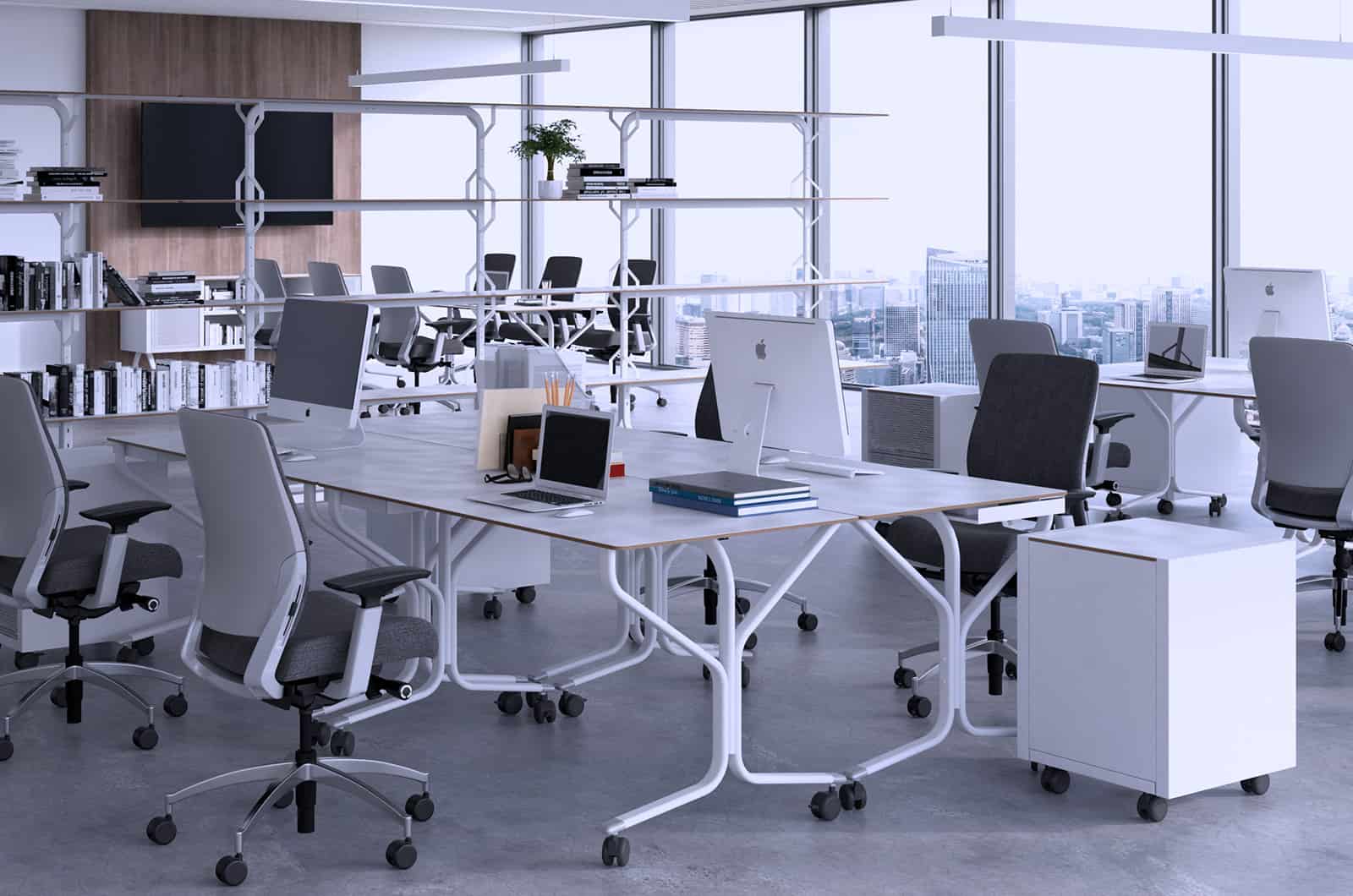As we spend a significant portion of our day in the office, it is important to create a work environment that is conducive to productivity and well-being. From ergonomic office chairs to the layout of the office, the furniture in our office greatly impacts our ability to focus.
The Impact of Office Furniture on Employee Productivity
Employees Feel Motivated
The right office furniture can inspire and motivate employees to work productively. Furniture that is functional, aesthetically pleasing, and comfortable can create a positive and inviting work environment that encourages employees to be productive.
Reduces Productivity Drains During Work Day
Poorly designed or uncomfortable furniture can be a significant drain on employee productivity. Uncomfortable seating, inadequate desk space, or cluttered work areas can all contribute to a less productive workday, causing stress, discomfort, and fatigue.
Employee Health and Wellness is Enhanced
Sitting at a desk for prolonged periods of time can have a negative impact on employee health and wellness. The right office furniture, such as ergonomic chairs and standing desks, can help to reduce the risk of injury and promote better posture, leading to improved health and wellness.
Decreases Company Costs
Investing in high-quality office furniture may seem expensive, but it can ultimately save a company money. Well-designed furniture that is durable and long-lasting can reduce the need for frequent replacements or repairs, ultimately reducing overall costs.
Promotes Collaboration and Boosts Creativity
The right office furniture can encourage collaboration and teamwork, leading to increased creativity and productivity. Comfortable seating, ample desk space, and flexible furniture arrangements can all facilitate better communication and collaboration among employees.
Productivity Increases When Employees Practice Good Posture
Good posture is essential for maintaining health. The right office furniture can help to promote good posture, reducing the risk of pain, discomfort, and injury, and ultimately leading to a more productive and healthy workforce.
Selecting Ergonomic Office Furniture
When selecting ergonomic office furniture, there are a few key things to keep in mind:
Comfort
Comfort should be your top priority with ergonomic office furniture. Your chair and desk should be comfortable to sit at for extended periods, and your keyboard and mouse should be easy to use. Look for chairs with good lumbar support, adjustable height and tilt, and a comfortable seat cushion. For desks, look for adjustable height options that allow you to sit or stand.
Support
In addition to comfort, you’ll want to look for furniture that provides good support. Your chair should support your back, neck, and arms, and your desk should provide adequate support for your wrists and forearms. Look for chairs with adjustable armrests and desks with wrist pads.
Adjustability
Ergonomic furniture should be adjustable to fit your body and working style. Look for chairs and desks that are adjustable in height and tilt, and that have customizable armrests and footrests. This will allow you to find the perfect position for your body and reduce strain.
Durability
Office furniture is an investment in your health and productivity. Look for furniture that is made from high-quality materials and that will last for years to come. You don’t want to have to replace your furniture every year or two.
Top Ergonomic Office Furniture Options
Now that you know what to look for in ergonomic office furniture, here are just a few of the top options on the market:
Lifeform High Back Executive Office Chair

Herman Miller Aeron Chair

Humanscale Freedom Office Chair

Are Ergonomics really important? Is it a real science?
Human Factors and Ergonomics: Optimizing Human Well-being and Overall System Performance
Human factors and ergonomics (HF&E) is an interdisciplinary field that involves the application of scientific and engineering principles to the design of systems, processes, and products that take into account the human element. HF&E focuses on optimizing the interaction between humans and their environment to improve human well-being and performance.
The Importance of Human Factors and Ergonomics
The importance cannot be overstated. In today’s complex technological world, the success of a system, process, or product depends on the interaction between a human user and a system design. Failure to consider human factors will result in decreased performance, reduced efficiency, and even injury.
By contrast, considering human factors and ergonomics can lead to many benefits. Benefits include increased efficiency, improved user satisfaction, increased safety, and reduced risk of injury. Moreover, designing systems and products with ergonomics in mind can lead to better health outcomes for users, increased productivity and quality of life.
HF&E Applications
HF&E has applications in many different scientific fields, including:
- Aerospace
- Healthcare
- Manufacturing
- Transportation
- Military
- Consumer products
- Information technology
In all of these areas, HF&E principles are essential to ensuring the optimal design of systems and products that meet the needs of users and professionals in the field have advanced degrees in areas such as engineering, psychology, or human factors.
Finding the Right Set Up for Your Office Will Make a Difference
Human factors and ergonomics are essential disciplines for well-being and overall system performance. The application of these principles can lead to many benefits, including increased efficiency, improved user satisfaction, increased safety, and reduced risk. It can seem like a sales pitch, but the science is real and the results are in, using the right furniture can and will boost productivity in the office. The connection between office furniture on employee performance shouldn’t be ignored.






